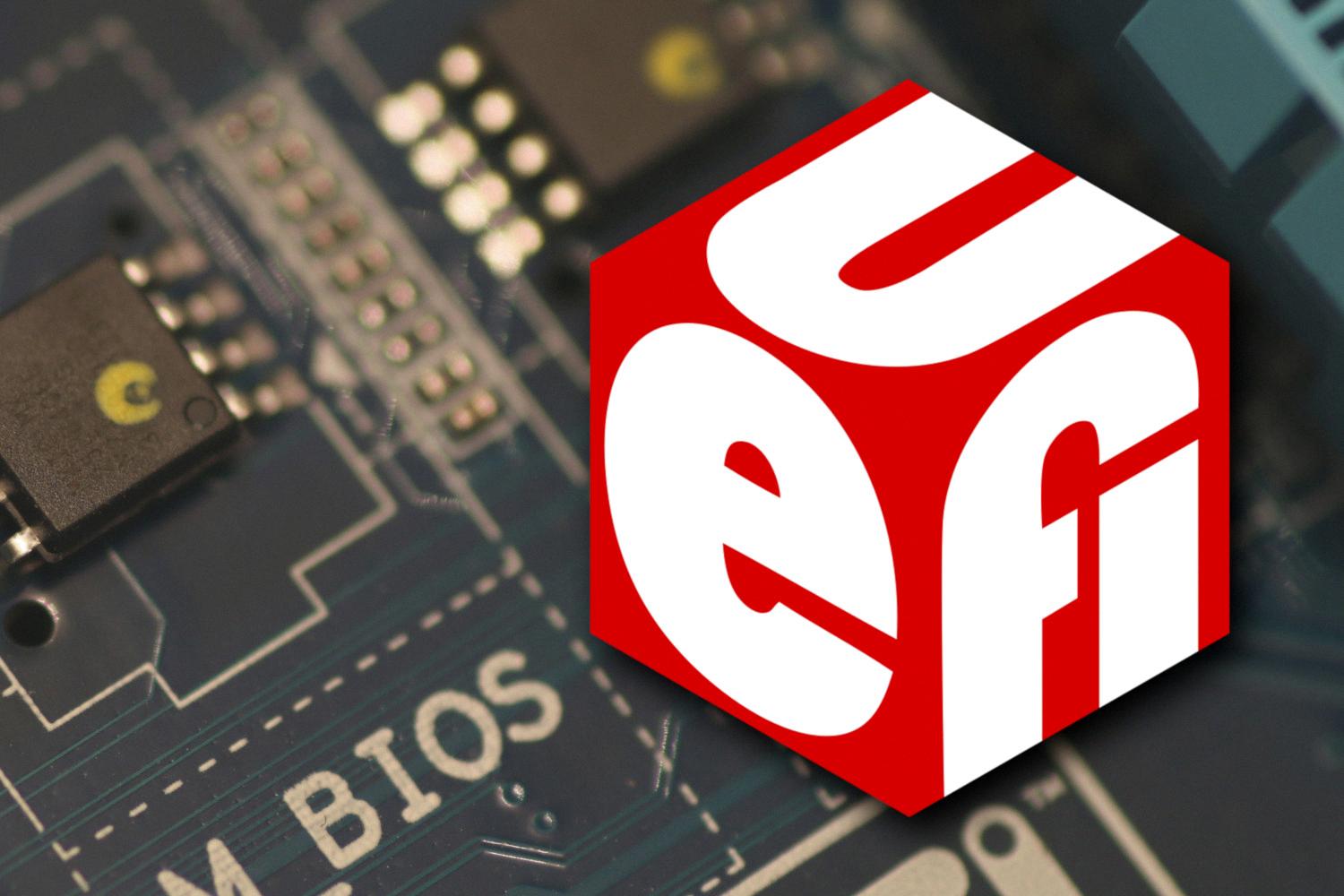UEFI, or Unified Extensible Firmware Interface, has become the standard firmware interface for modern devices, replacing the traditional BIOS (Basic Input/Output System). It offers a range of advantages and disadvantages that are worth considering when deciding whether to use UEFI or stick with the legacy BIOS.
One of the main advantages of UEFI is its enhanced functionality and feature set. UEFI provides a more advanced and flexible interface compared to BIOS, allowing for faster boot times, improved security measures, larger disk support, and a graphical user interface. This means that users can benefit from a more user-friendly and visually appealing experience when accessing their device’s firmware settings.
Faster boot times are a significant advantage of UEFI. UEFI is designed to initialize hardware and start the operating system more quickly than the traditional BIOS. This can be especially beneficial for devices that require frequent restarts or for users who value fast boot times.
Security is another area where UEFI shines. UEFI introduces features such as “Secure Boot,” which ensures that the computer only boots from authorized and digitally signed applications. This helps to protect against malware and unauthorized software, providing a higher level of security for the system and the user’s data.
UEFI also offers support for larger disks and partitions, which is an important advantage in today’s era of ever-increasing storage capacities. Legacy BIOS has limitations in terms of disk size and the number of partitions it can support, whereas UEFI overcomes these limitations, allowing for the use of larger storage devices and more partitions.
Furthermore, UEFI provides discrete driver support, which makes it easier to update firmware and add new functionalities. In contrast, BIOS has its driver support stored in ROM, making firmware updates a more complex process. With UEFI, manufacturers can release updated firmware versions that can be easily installed by the users, ensuring that their devices are always up to date.
Despite these advantages, UEFI does have some disadvantages as well. One of the main drawbacks is its reliance on Secure Boot or vendor-specific boot protection solutions. While UEFI itself provides a more secure boot process, it does not guarantee validation or protection of the entire boot process. This means that additional measures may be necessary to ensure the security of the system.
Another potential downside of UEFI is that some older hardware and software may not be compatible with UEFI mode. This can be an issue for users who rely on legacy applications or have older devices that do not support UEFI. In such cases, switching to UEFI may not be feasible or may require additional workarounds.
UEFI offers numerous advantages over legacy BIOS, including faster boot times, improved security, larger disk support, and a more user-friendly interface. However, it is important to consider the potential drawbacks, such as the reliance on Secure Boot and the compatibility issues with older hardware and software. Ultimately, the decision to use UEFI or legacy BIOS will depend on the specific requirements and limitations of the device and the user’s preferences.
What Are The Advantages Of UEFI?
UEFI, or Unified Extensible Firmware Interface, offers several advantages over traditional BIOS (Basic Input/Output System). Here are the key benefits of UEFI:
1. Faster boot times: UEFI allows for much faster boot times compared to BIOS. It achieves this by enabling parallel initialization of hardware components, optimizing the boot process, and reducing the time it takes for the operating system to load.
2. Larger disk support: UEFI supports modern disk partitioning schemes, such as GUID Partition Table (GPT), which allows for larger disk sizes (beyond the 2.2TB limit of BIOS) and more partitions. This is particularly useful in today’s era of larger hard drives and solid-state drives (SSDs).
3. Secure boot: UEFI includes a feature called Secure Boot, which helps protect the system from malware and unauthorized operating systems during the boot process. It verifies the digital signature of the bootloader and operating system, ensuring that only trusted software is loaded.
4. Compatibility with modern hardware: UEFI supports a wide range of hardware devices and peripherals, including USB 3.0, PCIe, and NVMe (Non-Volatile Memory Express) storage devices. This ensures compatibility with the latest hardware technologies and allows for better performance and functionality.
5. Graphical user interface (GUI): UEFI provides a graphical user interface that makes it easier to navigate and configure firmware settings. This is a significant improvement over the text-based interface of BIOS, offering a more user-friendly and intuitive experience.
6. Networking capabilities: UEFI includes built-in networking capabilities, allowing for features like network boot and remote firmware updates. This is particularly useful in enterprise environments where centralized management and configuration are important.
7. Flexibility and extensibility: UEFI is designed to be modular and extensible, making it easier for manufacturers to add new features and functionality. This flexibility enables the development of customized firmware solutions tailored to specific device requirements.
UEFI offers faster boot times, support for larger disks, enhanced security, compatibility with modern hardware, a graphical user interface, networking capabilities, and flexibility for manufacturers. These advantages make UEFI a superior firmware interface compared to traditional BIOS.

What Are Disadvantages Of UEFI?
– UEFI relies on Secure Boot or vendor-specific boot protection solutions, which means that there is no automatic validation or protection of the boot process just by choosing UEFI over legacy mode. This can leave the system vulnerable to boot-related security threats.
– Older hardware and software may not be compatible with UEFI mode. This can be a problem if you have legacy devices or software that you need to use with your system. Compatibility issues can lead to functionality problems or even complete incompatibility.
– UEFI can be more complex to work with compared to traditional BIOS. It has a larger code base and more advanced features, which can make it harder to understand and configure for less experienced users. This complexity can also lead to more potential for errors or issues during setup or troubleshooting.
– Some users have reported difficulties in dual-booting or installing multiple operating systems on UEFI-based systems. UEFI’s unique partitioning scheme and boot process can sometimes cause conflicts or make it more challenging to set up multiple operating systems on the same machine.
– UEFI has been criticized for being more restrictive in terms of customization and modification. Some users have found it more difficult to modify settings or customize their system’s boot process compared to traditional BIOS. This can be a disadvantage for advanced users or those who prefer more control over their system’s configurations.
– UEFI implementations can vary among different manufacturers, leading to inconsistent user experiences. Each manufacturer may have its own set of UEFI features and layout, which can make it harder for users to switch between different UEFI-based systems or troubleshoot issues across different devices.
What Are The Pros And Cons Of UEFI Vs Legacy?
UEFI (Unified Extensible Firmware Interface) and legacy BIOS (Basic Input/Output System) are two different firmware interfaces used by computers to start up and initialize hardware before the operating system is loaded. Each has its own set of advantages and disadvantages.
Pros of UEFI:
– Faster boot times: UEFI can start up the computer much faster than legacy BIOS, which can save valuable time.
– Better security: UEFI supports Secure Boot, a feature that helps protect against malware and unauthorized operating systems from being installed.
– Larger disk support: UEFI can handle disks larger than 2.2 terabytes, whereas legacy BIOS has limitations in this area.
– Graphical user interface (GUI): UEFI provides a more user-friendly interface with mouse support and graphical menus, making it easier to navigate and configure settings.
Cons of UEFI:
– Complexity: UEFI is more complex than legacy BIOS, requiring more advanced technical knowledge to work with and troubleshoot.
– Compatibility: Some older hardware and operating systems may not be fully compatible with UEFI, leading to potential issues during installation or usage.
– Limited support: While UEFI is becoming increasingly common, there may still be some systems or software that do not fully support it.
Pros of Legacy BIOS:
– Simplicity: Legacy BIOS is simple and straightforward, making it easier to understand and work with, especially for less technical users.
– Wide compatibility: Legacy BIOS is the standard firmware interface that has been widely used for many years, ensuring compatibility with older hardware and operating systems.
– More options for customization: Legacy BIOS often provides more options for customization and tweaking, allowing advanced users to fine-tune various settings.
Cons of Legacy BIOS:
– Slower boot times: Legacy BIOS takes longer to start up compared to UEFI, resulting in slower overall boot times.
– Limited disk support: Legacy BIOS has limitations when it comes to handling disks larger than 2.2 terabytes, which can be a drawback for systems requiring large storage capacities.
– Lack of modern features: Legacy BIOS lacks some of the advanced features and security enhancements provided by UEFI, making it less suitable for modern computing needs.
UEFI offers faster boot times, better security, larger disk support, and a graphical user interface. However, it is more complex and may have compatibility issues with older hardware and software. Legacy BIOS, on the other hand, is simpler, more compatible with older systems, and offers more customization options, but it has slower boot times, limited disk support, and lacks some modern features. The choice between UEFI and legacy BIOS depends on the specific needs and requirements of the user or system.
What Advantages Does UEFI Have Over BIOS?
UEFI, or Unified Extensible Firmware Interface, offers several advantages over BIOS, or Basic Input/Output System. These advantages include:
1. Faster boot time: UEFI provides faster boot times compared to BIOS. This is because UEFI uses a more efficient initialization process, allowing the computer to start up more quickly.
2. Discrete driver support: UEFI has the ability to support discrete drivers, which are separate from the firmware itself. This means that drivers can be updated or added without having to update the entire UEFI firmware. In contrast, BIOS stores its driver support in its ROM, making it more difficult to update the firmware.
3. Enhanced security: UEFI offers security features such as “Secure Boot.” This feature ensures that the computer only boots from authorized and digitally signed applications, preventing the system from booting from unauthorized or potentially harmful software. This helps to protect against malware and other security threats.
4. Support for larger hard drives: UEFI supports GUID Partition Table (GPT), which allows for larger partition sizes and supports hard drives larger than 2 terabytes. In contrast, BIOS uses the older Master Boot Record (MBR) partitioning scheme, which has limitations on partition size and drive capacity.
5. Graphical user interface (GUI): UEFI provides a more modern and user-friendly GUI compared to the text-based interface of BIOS. This makes it easier for users to navigate and configure system settings.
UEFI offers improved boot times, discrete driver support, enhanced security, support for larger hard drives, and a more user-friendly interface compared to BIOS. These advantages make UEFI a preferable option for modern computer systems.
Conclusion
UEFI brings several advantages to device management with its standardized firmware experience. It offers a homogeneous set of variables, services, and drivers that are common across all UEFI implementations. This means that whether you are using UEFI on a desktop PC or a smartphone, you can expect the same core capabilities and features.
One major advantage of UEFI is its faster boot times compared to legacy BIOS. This can greatly improve the overall user experience by reducing the waiting time when starting up the device. Additionally, UEFI provides better security measures, such as “Secure Boot”, which helps prevent unauthorized or unsigned applications from booting up the system. This adds an extra layer of protection against malware and other security threats.
Another benefit of UEFI is its support for larger disk sizes. Legacy BIOS has limitations in terms of the size of the disks it can handle, whereas UEFI can support larger storage capacities. This is especially important in today’s world where data storage needs are constantly increasing.
Furthermore, UEFI offers a graphical user interface (GUI) which makes it easier for users to interact with the firmware settings. This is a significant improvement over the text-based interface of legacy BIOS, as it provides a more intuitive and user-friendly experience.
However, it is important to note that UEFI also has its share of disadvantages. One major drawback is its reliance on Secure Boot or vendor-specific boot protection solutions. Simply choosing UEFI over legacy mode does not automatically grant validation or protection of the boot process. Additionally, some older hardware and software may not be compatible with UEFI, which can limit its usage in certain situations.
UEFI provides numerous advantages such as faster boot times, improved security, support for larger disk sizes, and a graphical user interface. However, it is important to consider the potential limitations, such as the need for additional security measures and compatibility issues with older hardware and software.







